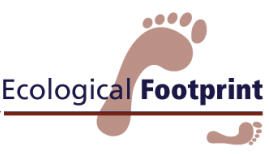
An Ecological Footprint (or Eco-footprint) measures the amount we demand from the planet/biosphere, versus the availability of resources and the ability of the planet/biosphere to assimilate the waste generated from our actions. All impacts of consumption are converted into the hectares of land (forest, pasture, crop, sea, and built environment) required to supply and absorb the effects of consumption.
The land needed to produce the goods, and the energy to produce the goods and absorb our waste, is our Ecological Footprint.
Why measure our footprint?
Sustainability requires rates of use that allow regeneration, reuse of waste, and preservation (not degradation) of nature. Measuring our Eco-footprint allows us to see what actions are most effective in helping slow climate change, prevent pollution, and meet government requirements. It’s also a tool to help environmentally conscious individuals and organizations learn and lead.
Overall, BCIT’s aspirational goal is to reduce our energy and material consumption, our Ecological Footprint, by 75%.
Burnaby campus ecological footprint
BCIT’s Burnaby Campus Total Ecological Footprint for the 2006/2007 fiscal year was 16,159 ha.
The BCIT Ecological Footprint project (2007/2008) analyzed the material flows of our operations to account for all material and energy being delivered to and consumed on the Burnaby campus, and all waste streams leaving the Burnaby campus in solid, liquid and gas form.
We measured our use in terms of energy, water, food, waste, transportation, land, and buildings. As well, environmental project funding, number of environmental jobs on campus, number of students in environmental programs, and number of environmental courses were counted.

Download the full Ecological Footprint Assessment report [PDF]
Download a summary of the findings [PDF]
The Ecological Footprint data contributed to the implementation of item 10 of the Memorandum of Understanding between the School of Construction and the Environment and the Administrative Services Department, regarding Environmental Stewardship and Sustainability Practices. This item called for BCIT to assess the ecological footprint of the Institute, and develop “the means and methods to minimize and/or repair that impact, while achieving economies and adding value to the Institute and industry clients”.
Calculate your ecological footprint
BCIT is a member of the Global Footprint Network. The network has an online calculator you can use to calculate your own ecological footprint.